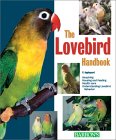Upside-Down Food Pyramid
These diet recommendations are general ground rules. Certain species of birds require special diet considerations, so consult your avian vet for more specific recommendations. We’ve fed this type of diet to lovebirds, cockatiels, English budgies (parakeets), Poicephalus parrots (Senegals, Red Belly parrots, etc.), Amazons (blue-front, yellow nape), conures (green cheek, blue crown), Indian ringnecks, canaries, finches, and various other birds and parrots.
Don’t forget to change your bird’s diet slowly. Consistency is important! Keep giving the same fresh veggies even if the bird ignores them. Eventually, your bird will try something new. Try hiding new foods under familiar foods. Try sprouting the seeds your bird usually eats; sprouted seeds are much healthier than unsprouted seeds, and they will seem “familiar” to your bird.
*Fruits are high in sugar and spoil easily, so they are not as important (or as nutritious) as fresh vegetables. They also attract flies (germs!) and ants (annoying!). Avoid strawberries unless they are certified organic due to harmful pesticides (considered the worst fruit for this). Try a special fruit/vegetable wash if you can’t obtain organically grown vegetables and fruits. In California, Trader Joe’s carries an excellent nontoxic cleaner for fresh foods.
**Don’t leave cooked and fresh foods in the cage for more than a couple of hours to avoid spoilage. Yogurt should only be left in for an hour. Also try prepared foods like Crazy Corn that require only a few minutes of cooking.









